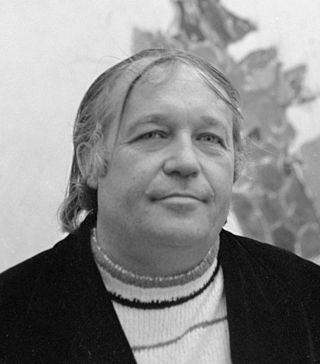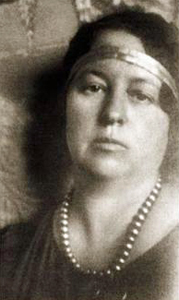
Carl Oscar Borg was a Swedish-born painter who settled in the United States and became known for views of California and the SouthWest.

Samuel Lewis Francis was an American painter and printmaker.
Walter Conrad Arensberg was an American art collector, critic and poet. His father was part owner and president of a crucible steel company. He majored in English and philosophy at Harvard University. With his wife Louise, he collected art and supported artistic endeavors.

Robert William Wood was an American landscape painter. He was born in England, emigrated to the United States and rose to prominence in the 1950s with the sales of millions of his color reproductions. He was active in the art colonies of San Antonio, Texas in the 1930s, Monterey, California in the 1940s and Laguna Beach in the 1950s.

Joseph Kleitsch was a Hungarian-American portrait and plein air painter who holds a high place in the early California School of Impressionism.
Arthur Hill Gilbert was an American Impressionist painter, notable as one of the practitioners of the California-style. Today, he is remembered for his large, colorful canvases depicting meadows and groves of trees along the state's famed 17 Mile Drive. Gilbert was part of the group of American impressionist artists who lived and painted in the artists' colony scene in California at Carmel and Laguna Beach during the 1920s and 1930s.
The California Art Club (CAC) is one of the oldest and most active arts organizations in California. Founded in December 1909, it celebrated its centennial in 2009 and into the spring of 2010. The California Art Club originally evolved out of The Painters Club of Los Angeles, a short-lived group that lasted from 1906–09. The new organization was more inclusive, as it accepted women, sculptors and out-of-state artists.

Theodore Nikolai Lukits was a Romanian American portrait and landscape painter. His initial fame came from his portraits of glamorous actresses of the silent film era, but since his death, his Asian-inspired works, figures drawn from Hispanic California and pastel landscapes have received greater attention.
Timothy J. Clark is an American artist best known for his large watercolor paintings of urban landscapes, still lifes, and interiors, and for his oil and watercolor portraits. His paintings and drawings are in the permanent collections of more than twenty art museums.
Ed Moses was an American artist based in Los Angeles and a central figure of postwar West Coast art.
Arny Karl was one of the key artists in the early stages of the California Plein-Air Revival, which started in the 1980s and continues to this day. Along with Tim Solliday and Peter Seitz Adams, Karl helped revitalize the use of pastels to paint outdoors or en plein air, as the French described regarding the practice of working directly from nature. Karl was a student of Theodore Lukits (1897–1992), who was a prominent California Impressionist and the best known Early California painter to have worked in pastel. His work has been included in a number of museum exhibitions, is represented in a number of prominent public and private collections and has been the subject of a number of curatorial essays.
Peter Seitz Adams is an American artist. His body of work focuses on landscapes and seascapes created en plein air in oil or pastel as well as enigmatic figure and still-life paintings. He is noted for his colorful, high-key palette and broad brushwork. Adams has held numerous solo and group exhibitions in galleries and museums, including throughout California, the Western United States, and on the East Coast in Philadelphia, Vermont, and New York. Adams is the longest serving President of the California Art Club and has served on its board of directors in Pasadena, California from 1993 to 2018. He is also a writer on subjects relating to historic artists for the California Art Club Newsletter, as well as for a number of the organization's exhibition catalogs.

The terms California Impressionism and California Plein-Air Painting describe the large movement of 20th century artists who worked out of doors, directly from nature in California, United States. Their work became popular in the San Francisco Bay Area and Southern California in the first three decades after the turn of the 20th century. Considered to be a regional variation on American Impressionism, the California Impressionists are a subset of the California Plein-Air School.

Frank Tolles Chamberlin was an American painter, muralist, sculptor, and art teacher.

Jessie Hazel Arms Botke was an Illinois and California painter noted for her bird images and use of gold leaf highlights.

Hassel Smith was an American painter.
The Painters' Club of Los Angeles was a short-lived arts organization that existed from 1906 to 1909, and allowed only men as members. When the group disbanded a number of artists who had been members reorganized themselves as the California Art Club, including Charles Percy Austin (1883–1948), Franz Bischoff (1864–1929), Carl Oscar Borg (1879–1947), Benjamin Brown (1865–1942), Hanson Puthuff (1875–1972), Jack Wilkinson Smith (1873–1949), and William Wendt (1845–1946). Beginning with its founding in December 1909, the new California Art Club widened its membership guidelines to include female painters and sculptors of any gender.

Walter Elmer Schofield was an American Impressionist landscape and marine painter. Although he never lived in New Hope or Bucks County, Schofield is regarded as one of the Pennsylvania Impressionists.
Donna N. Schuster was an American easel painter, who created work in the style of modern impressionism using the medium of oil and watercolor. She focused her work in Wisconsin then later moved to Los Angeles, California where she died in 1953.
Ala Story, born Emilie Anna Maria Heyszl von Heyszenau, was a gallerist and curator, as well as the director of the American British Art Center in New York and the Santa Barbara Museum of Art (1952–57). She was the daughter of an Austrian colonel and cavalry commandant, W. von Heyszenau, and traced her lineage on her mother's side back to a 12th-century minnesanger, Hoffman van der Aue.










